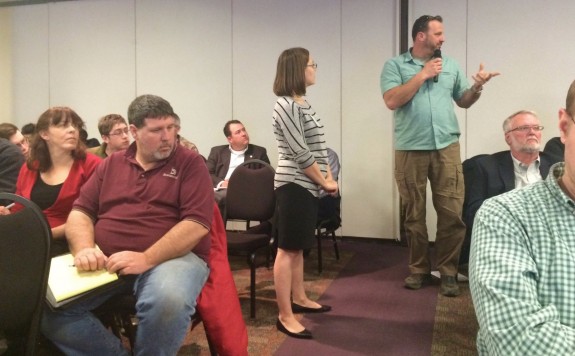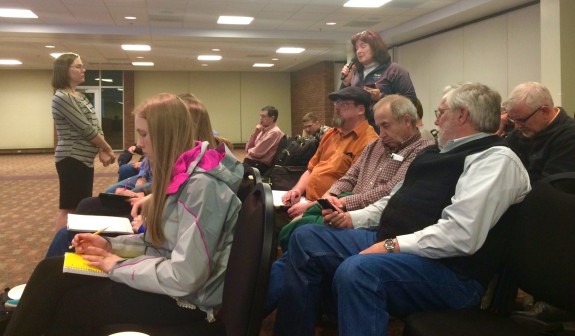
Over 70 people, including students from Southwest Minnesota State University (SMSU) and the University of Minnesota, Morris, community leaders, farmers, local business members, gathered in a ballroom at SMSU on Wednesday evening, February 24th, to meet with the Minnesota Pollution Control Agency (MPCA). The meeting was to provide feedback on the Clean Power Plan as it applies to Minnesota.
The MPCA is charged with reviewing the Clean Power Plan that was finalized in August 2015 to evaluate the lowest cost and most effective pathway for Minnesota to achieve compliance. In an effort to gather information from the public as Minnesota’s Clean Power Plan is developed, the MPCA scheduled several listening sessions throughout Minnesota including Marshall.

Melissa Kuskie from the MPCA led the presentation in Marshall. Kuskie talked about the Supreme Court stay that was issued on February 9, 2016, and when asked by local meeting participants about the stay, she stated that they would continue gathering information and technical analysis while awaiting the Circuit Courts decision later this spring. The week following this listening session, MPCA Commissioner John Linc Stine posted a formal response from MPCA to lawmakers who have expressed opposition to the agency’s continued engagement with Minnesotans around issues related to the Clean Power Plan.

The local community focused on the impact that clean energy has had in the Marshall and surrounding area. Brad Haupert from Lake Wilson spoke about the economic benefits of the clean energy economy, noting that wind jobs are technical and demand on-going education from skilled workers. Haupert has worked for over 14 years as a wind turbine technician at Vestas. Peg Furshong, CURE’s Operations and Program Director, noted that the annual salary for wind power jobs in southwestern Minnesota is roughly $61,000. Currently, there are 15,000 well-paying clean energy jobs in Minnesota and according to a DEED report, southwestern Minnesota holds 41 percent of Minnesota’s wind energy jobs.

John Bornhoft from Buffalo Ridge Concrete in Marshall spoke about the significant impact the wind energy economy has had on his business all across southwestern Minnesota.
“Our small community would not exist today if it were not for the wind industry. There are 600 plus wind turbines that grace the skyline along Buffalo Ridge, bringing clean, renewable energy to the forefront and keeping our community alive and vital,” said Sirrina Martinez, Director of the Chamber of Commerce in Lake Benton, Original Wind Power Capital of the Midwest.
Several students from SMSU economics professor Steve Davis’s class attended the listening session to analyze the benefits of clean energy to the region.
CURE supports MPCA’s continued stakeholder engagement to gather information that will help Minnesota become better prepared to meet the federal expectations of the Clean Power Plan.
Blog post by Peg Furshong, CURE’s Operations and Program Director. Photos by Amanda Smith, MPCA Air Policy Planner, Twitter.


